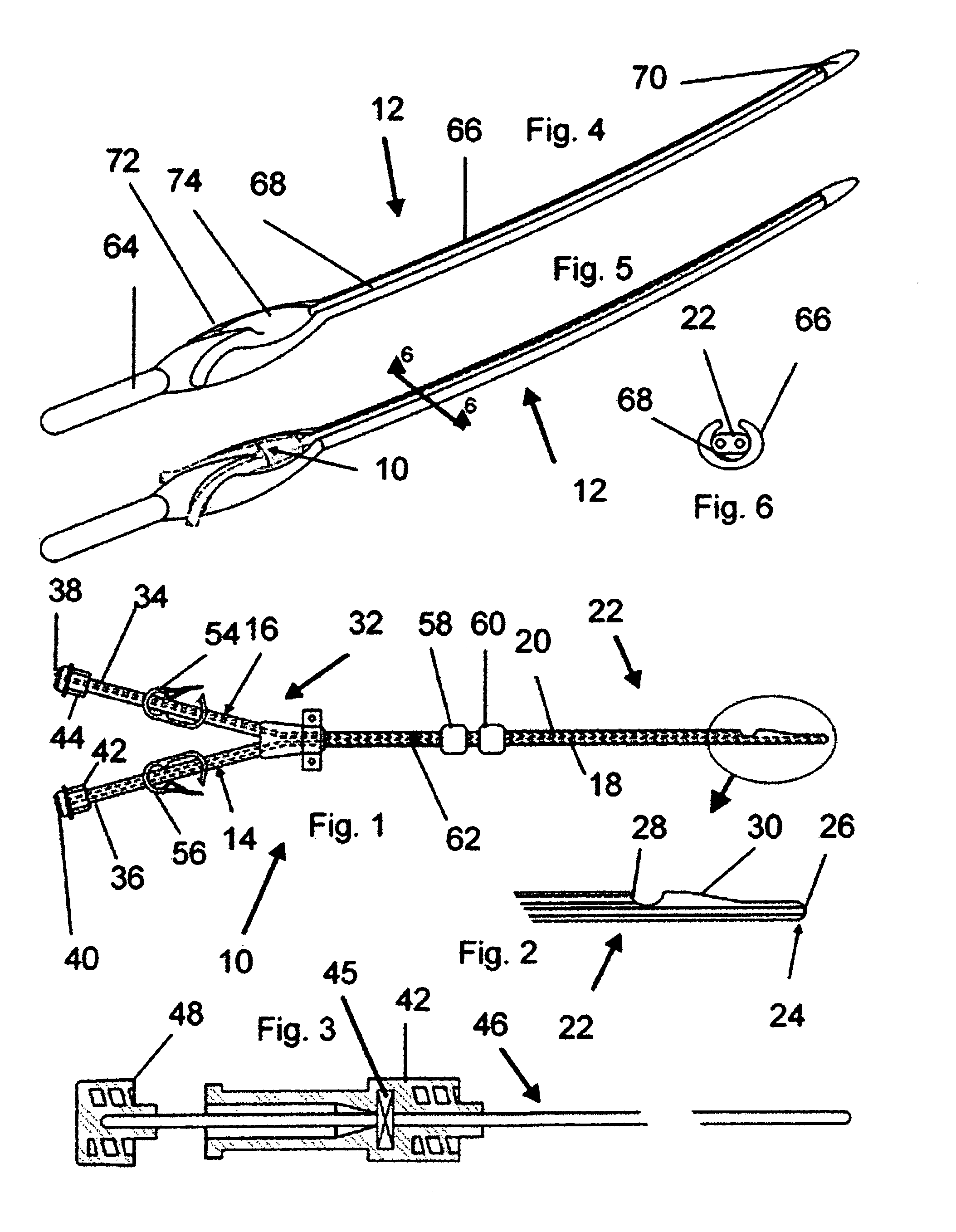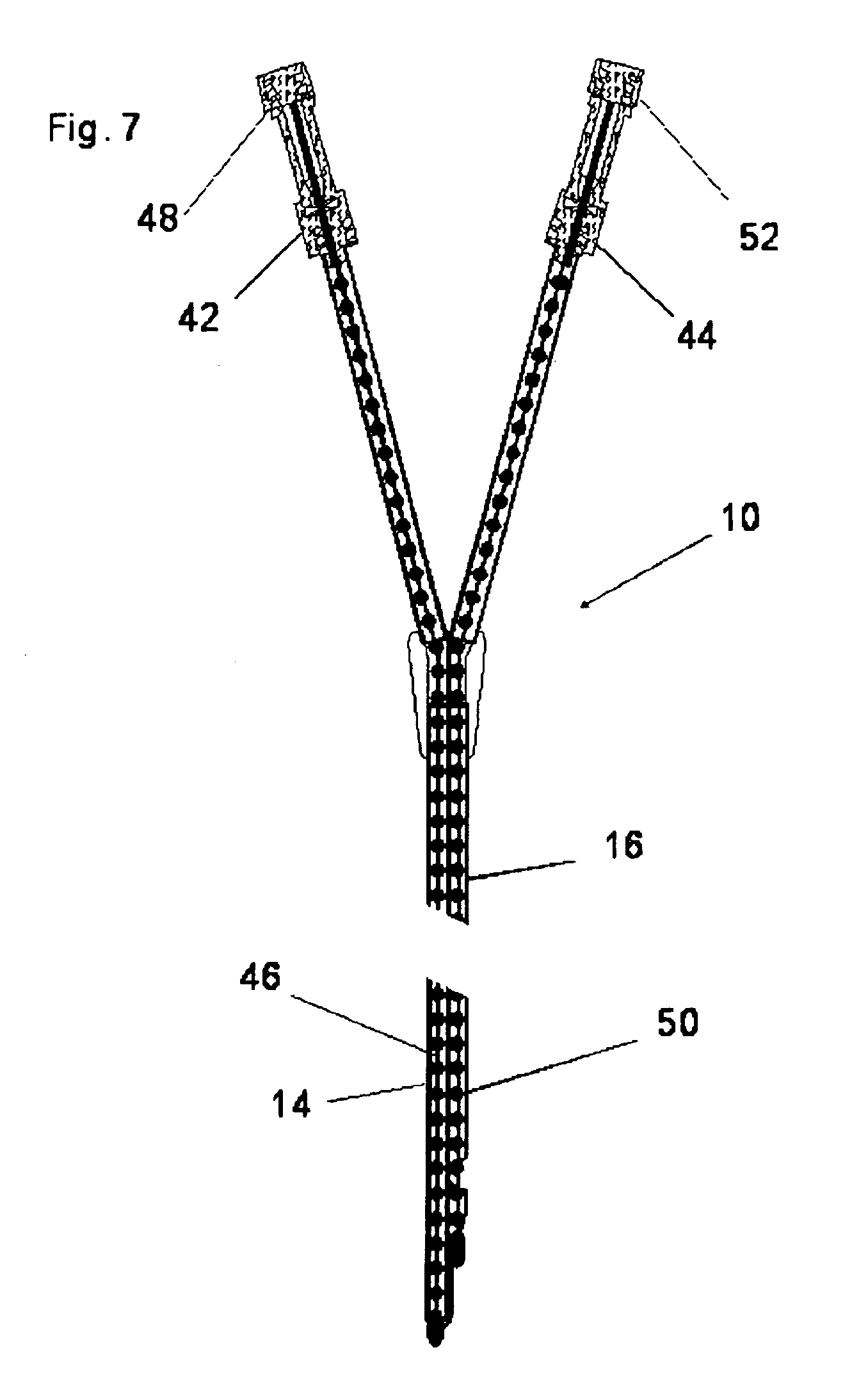Catheter and tunneling device therefor
a tunneling device and catheter technology, applied in the field of catheters, can solve the problems of loss of catheter function, inefficient flow, inconvenient use of catheters, etc., and achieve the effects of reducing long-term infections, preventing clotting of lumens, and improving long-term health benefits
- Summary
- Abstract
- Description
- Claims
- Application Information
AI Technical Summary
Benefits of technology
Problems solved by technology
Method used
Image
Examples
Embodiment Construction
[0030]Referring now to the drawings, the present invention is generally directed to a catheter 10 for introduction and removal of fluids from a body B and a tunneling device 12 to more readily enable insertion of the catheter 10. The catheter 10 includes a first conduit 14 for removing fluid from the body B and another conduit 16 for delivering fluid to the body. Parts 18 and 20 of each of the conduits 14 and 16, respectively, are integrally connected as part a first end 22 of the catheter 10 and. extend along side one another.
[0031]The first conduit 14 can preferably be the fluid delivering conduit (venous flow) which extends beyond the second conduit 16 as best seen in FIGS. 1 and 2 and forms a terminal point 24 of the first end 22 and defines a first opening 26 thereat. The second conduit 16 can preferably be the fluid receiving conduit (arterial flow) which extends to a point short of the terminal point 24 and defines a second opening 28. Also, a bumper portion 30, which can pre...
PUM
 Login to View More
Login to View More Abstract
Description
Claims
Application Information
 Login to View More
Login to View More - R&D
- Intellectual Property
- Life Sciences
- Materials
- Tech Scout
- Unparalleled Data Quality
- Higher Quality Content
- 60% Fewer Hallucinations
Browse by: Latest US Patents, China's latest patents, Technical Efficacy Thesaurus, Application Domain, Technology Topic, Popular Technical Reports.
© 2025 PatSnap. All rights reserved.Legal|Privacy policy|Modern Slavery Act Transparency Statement|Sitemap|About US| Contact US: help@patsnap.com



